The New Reef Aquarium:Setup, Care and Compatiblity
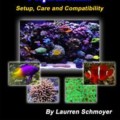
 There are few things more relaxing than watching a living reef aquarium filled with bright, exotic, colorful fish. Your eyes are soon transfixed on the breath-taking corals with their mind-blowing colors and endless shapes. Having your own living reef is the ultimate hobby and a spectacular achievement.
There are few things more relaxing than watching a living reef aquarium filled with bright, exotic, colorful fish. Your eyes are soon transfixed on the breath-taking corals with their mind-blowing colors and endless shapes. Having your own living reef is the ultimate hobby and a spectacular achievement.
To create a thriving living reef takes the right equipment, knowledge, compatible livestock and routine care. Over 25 years of working with reefs I have discovered many hidden secrets and have finally created a blue print to help you build your own amazing living reef aquarium! My book is packed with pictures to guide you through each step in creating, stocking and caring for your reef. To get you started, you will learn what essential equipment is needed. I explain the details clearly, and in laymen terms, so that everyone can immediately grasp the content.
You will learn that the foundation of a reef aquarium is live rock, just like is found in the ocean reefs. As its name suggests, live rock is rock with living organisms including animals, plants, algae, bacteria, etc. attached to and growing in and on it. We stack live rock in aquarium reefs to create caves and crevices which, besides being aesthetically pleasing, give fish and invertebrates hiding places so that they can feel secure. Shelves are built into the rockwork at varying depths to place corals upon. You will soon learn the hidden techniques to creating your own rockwork masterpiece. Read More Here…
Comments Off on The New Reef Aquarium:Setup, Care and Compatiblity
Why Are Tank-Raised Saltwater Fish a Great Choice?
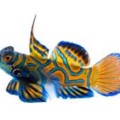
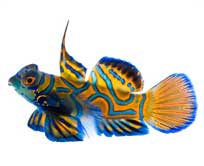
Entrepreneurial saltwater fish hobbyists have spent years developing techniques, testing and perfecting the science of growing beautiful, hardy, colorful fish on fish farms right here in the United States! Captive-raised or tank-raised saltwater fish often cost a few dollars more than their wild-caught counterparts do, but they are worth every penny; these fish have avoided the stress of capture, rough handling and long shipping routes. With the same vivid colors as fish found on a reef, tank-raised fish are significantly healthier and hardier – and they readily eat a variety of prepared fish foods!
One of the largest farms is Oceans, Reefs & Aquariums (ORA) is located in Florida. At ORA, they breed over 85 different species of marine fish. The most popular are clownfish available in many different designer styles.
One of ORA’s recent breeding successes is the Mandarin goby also called Mandarin Dragonets. Read More Here…
Comments Off on Why Are Tank-Raised Saltwater Fish a Great Choice?
Easiest Way to Feed Frozen Fish Foods
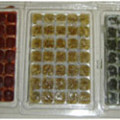
 Feeding frozen fish food can be a hassle. If you are like most people, you go to the freezer, pop out a few cubes or break off a section of frozen fish food; you place the food on a lid or a plate and go check FaceBook, watch TV or get involved in some work as you wait for it to thaw. After a considerable amount of time – maybe even the next day – you remember, “Oh, NO!” You find thawed, foul-smelling food on the counter or, you wonder why you have an aquarium full of skinny fish!
Feeding frozen fish food can be a hassle. If you are like most people, you go to the freezer, pop out a few cubes or break off a section of frozen fish food; you place the food on a lid or a plate and go check FaceBook, watch TV or get involved in some work as you wait for it to thaw. After a considerable amount of time – maybe even the next day – you remember, “Oh, NO!” You find thawed, foul-smelling food on the counter or, you wonder why you have an aquarium full of skinny fish!
Thus begs the question: can you simply feed the fish frozen food? Many years ago, I attended a Fish Health Management course at the University of Georgia by Dr. Gratzek. He took frozen food from the freezer and dropped it directly into his saltwater fish aquarium. He claimed it did not make any difference whether the food was frozen or thawed.
To be honest, most people have fed their fish frozen or partially thawed food at least some of the time. This happens when we either are in a hurry or remember right at bedtime. I know I would not be thrilled to eat steak and vegetables in their frozen form! It still seems logical that the best and least stressful way to feed our finned friends is to let their food thaw before dropping it in the tank!
Comments Off on Easiest Way to Feed Frozen Fish Foods
How To Clean Your Hydrometer For Accurate Readings
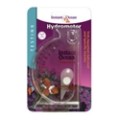
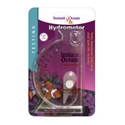 Water will evaporate from your aquarium and need to be replaced on a regular basis. When adding replacement water only use prefiltered water i.e. reverse osmosis (RO) water or conditioned freshwater. Salt in the water does not evaporate. It is a good idea to check your specific gravity with a hydrometer every so often to ensure the salt content is at the desired level. If the water has a low specific gravity ( the amount of salt in the water) instead of adding freshwater to top off your aquarium, add premix saltwater to raise the salt content.
Water will evaporate from your aquarium and need to be replaced on a regular basis. When adding replacement water only use prefiltered water i.e. reverse osmosis (RO) water or conditioned freshwater. Salt in the water does not evaporate. It is a good idea to check your specific gravity with a hydrometer every so often to ensure the salt content is at the desired level. If the water has a low specific gravity ( the amount of salt in the water) instead of adding freshwater to top off your aquarium, add premix saltwater to raise the salt content.
Most hobbyist use plastic hydrometer with the swing arms which give an accurate reading on specific gravity. But many hobbyist neglect to clean them. The pointer or swing arm will accumulate deposits over time. Rinse the hydrometer in freshwater after each use. For a thorough cleaning soak the entire hydrometer in vinegar (mild acid) for about 30 mins. and rinse. This will keep your hydrometer giving you an accurate reading for years.
Comments Off on How To Clean Your Hydrometer For Accurate Readings
There is A New Live Rock In Town
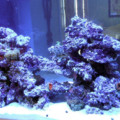
 Live rock is used to create stunning reef aquariums as well as to create a natural environment for saltwater fish only aquariums. As its name suggests live rock is rock with living organisms (animals, plants, algae, bacteria, etc.) attached to and growing on and in it.
Live rock is used to create stunning reef aquariums as well as to create a natural environment for saltwater fish only aquariums. As its name suggests live rock is rock with living organisms (animals, plants, algae, bacteria, etc.) attached to and growing on and in it.
In the past live rock was mainly collected from the ocean. Now we have new choice created by FHI Farms called Real Reef live rock. This manmade rock looks realistic and is available in a variety of shapes and sizes. It is made from calcium carbonate rock which gives the ability to buffer the water.
Once the rock is made it is placed in grow out tanks to bring it to life. In these tanks the good bacteria grows on the surface of the rock as well as coralline algae. Coralline algae give the rock a nice purple color. The picture shows a 150 gallon aquarium just set with “Real Reef” rock.
Comments Off on There is A New Live Rock In Town
Two Great Books On Marine and Reef Fish
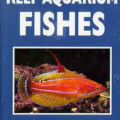
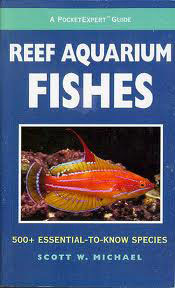 With all the available books on keeping saltwater fish and reef aquariums, I want to share with you a couple of my favorites that can help you choose the right fish for your aquarium.
With all the available books on keeping saltwater fish and reef aquariums, I want to share with you a couple of my favorites that can help you choose the right fish for your aquarium.
Scott W. Michael has written a number of books entirely on saltwater fish. In his collection there are two great, inexpensive reference books. Hobbyists would be wise to keep a copy of one or both on hand. A PocketExpert Guide to Marine Fishes: 500+ Essential-To-Know Aquarium Species and A PocketExpert Guide to Reef Aquarium Fishes: 500+ Essential-to-Know 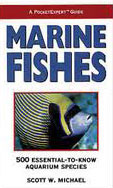 Species are quick reference guides on particular species of fish. Their compact size allows them to be carried to fish stores where you can look up fish you are thinking about purchasing. You will quickly discover if a fish is right for your aquarium. Both books have more than 500 color photos. Scott includes scientific and common names, maximum length, range, minimum aquarium size, foods & feeding, aquarium suitability index, reef aquarium Read More Here…
Species are quick reference guides on particular species of fish. Their compact size allows them to be carried to fish stores where you can look up fish you are thinking about purchasing. You will quickly discover if a fish is right for your aquarium. Both books have more than 500 color photos. Scott includes scientific and common names, maximum length, range, minimum aquarium size, foods & feeding, aquarium suitability index, reef aquarium Read More Here…
Comments Off on Two Great Books On Marine and Reef Fish
Refugiums Control High Nitrate and Phosphate Levels – Even Unwanted Algae!
High levels of nitrates and phosphates have frustrated many a saltwater hobbyist. Now refugiums are here to save the day! A refugium uses macro algae, mud and/or sand as natural filters for reducing nitrates, silicates, and phosphates. As you harvest (remove) macroalgae you are also removing excess nutrients from the aquarium. Reducing excess organic nutrients helps control unwanted algae growth in the display aquarium.
Since a refugium is generally separate from the main aquarium it provides protection for copepods and amphipods, giving your aquarium a constant, natural food source. This natural food can be netted from the refugium or will travel naturally to the display aquarium via the lines connecting the two. Predators such as fish, shrimp, and corals should never be placed in your refugium.
There Are Four Refugium Styles
Comments Off on Refugiums Control High Nitrate and Phosphate Levels – Even Unwanted Algae!
Dog Face Puffers Teeth Need Trimming Again!
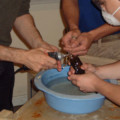
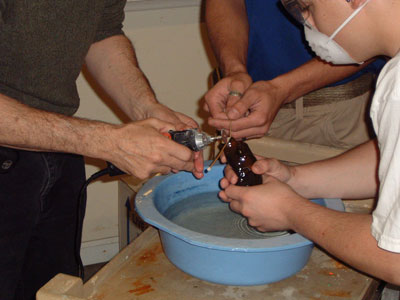 About a month ago my outside service techs brought a dogface puffer back from one of our service clients whose front teeth had grown so long the poor fellow could no longer eat. Just two years ago my staff and I trimmed his teeth, but they grew back, and here he was again. We needed to perform this tooth trimming operation to keep him from dieing of starvation.
About a month ago my outside service techs brought a dogface puffer back from one of our service clients whose front teeth had grown so long the poor fellow could no longer eat. Just two years ago my staff and I trimmed his teeth, but they grew back, and here he was again. We needed to perform this tooth trimming operation to keep him from dieing of starvation.
The dogface puffer is one of the species that commonly has a problem with overgrown teeth. In the wild puffer fish kill and eat crustaceans with hard shells – keeping their teeth worn down. They also grind their teeth on rocks and rubble as they attempt to remove algae. In the aquarium they may eat a nutritional diet but it usually consist of soft foods, and even if they eat the occasional crustacean, they just don’t find rocks and rubble to wear their teeth down.
Here’s the operation: We kept this puffer in a holding tank for a few days to calm him down. Read More Here…
Comments Off on Dog Face Puffers Teeth Need Trimming Again!
How The Pro’s move Big Tanks
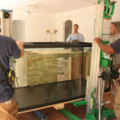
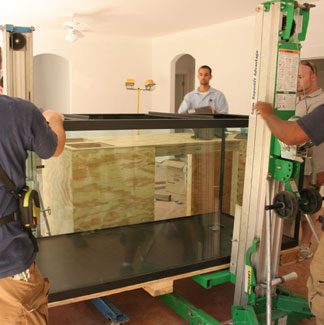 Moving big aquariums is exciting, fun and not as difficult as you might think – if you have the right equipment, that is. This picture shows a 540 gallon aquarium being set up in a home. The aquarium is 8 feet long by 3 feet wide and 3 feet high. Material lifts make it easy to large aquariums on a stand.
Moving big aquariums is exciting, fun and not as difficult as you might think – if you have the right equipment, that is. This picture shows a 540 gallon aquarium being set up in a home. The aquarium is 8 feet long by 3 feet wide and 3 feet high. Material lifts make it easy to large aquariums on a stand.
A material lift has a telescoping aluminum frame with steel forks and a hand crank. Large aquariums are usually shipped straped to a wooden pallet from the aquarium manufacturer. Just slide the forks inside the palate and start cranking. When the top of the pallet is even with the aquarium slide the aquarium off onto the stand. The aquarium in the picture took two 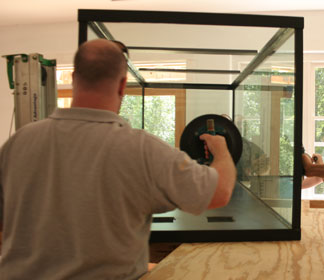 lifts because of it weight.
lifts because of it weight.
Not long ago used one of these lifts to raise an eight foot long tank through a second story window. That was very scary especially if for the person on the bottom doing the cranking. These lifts can be rented from most equipment rental stores.
Comments Off on How The Pro’s move Big Tanks
P.E. Mysis Shrimp Have A Whopping 69.5% Protein
If you want to pack in the nutrition and put some weight on your fish and LPS corals then you should be feeding Piscine Energetics Mysis! This freshwater shrimp is collected in the deep waters of Canada’s lakes and is instantly flash frozen to lock in vitamins and keep the actual mysis shrimp from breaking apart. Keeping the shrimp whole makes it easy for animals eating the shrimp to recognize it as a real food source.
Another advantage of being frozen on the lake is there are no fillers added, just solid mysis shrimp. Since mysis live in freshwater it eliminates parasites from being transferred to your saltwater fish. This food makes a great diet for most fish and even corals and finicky eaters will take this food because of its high levels of fatty acids. If you want your LPS coral to be plump place a piece of mysis in the coral’s tentacles and watch it grab the shrimp and pull it in.
Comments Off on P.E. Mysis Shrimp Have A Whopping 69.5% Protein